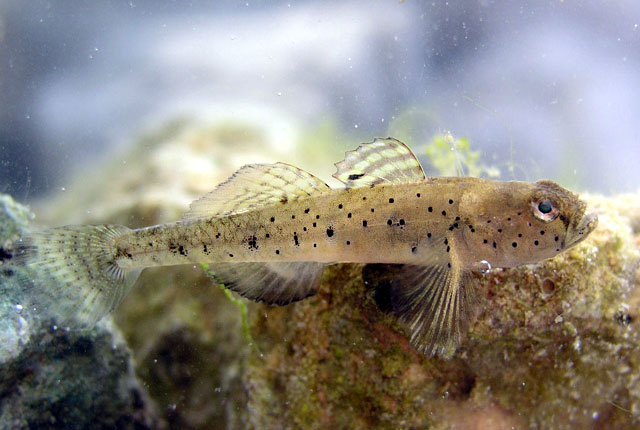| Gobiidae (Gobies), subfamily: Gobionellinae |
| 7 cm TL (male/unsexed); max.weight: 3.3 g |
|
demersal; freshwater; brackish |
| Europe: Adriatic coasts, from Po delta (Italy) to Neretva (Croatia). Introduced in Lake Trasimeno, Central Italy. (Ref.59043). |
|
This species is distinguished from other gobies in freshwaters of Adriatic basin and western Italy by the following characters: males with small black spots on body; with cephalic lateral line canals; anterior oculoscapular canal extending to snout; branched rays in second dorsal 8-9.5; anal origin below simple of first branched ray of D2; total scales in midlateral series 36-42; completely scaled caudal peduncle (Ref. 59043). |
| Found in inshore habitats, lagoons, lakes and large to medium-size rivers; on sand or mud bottom. Spawns after first winter in March-July; individual females spawn several times during a season. Adhesive eggs deposited under or between stones, shells and aquatic plants and males guard the eggs until hatching. Feeds on a wide variety of benthic invertebrates (worms, amphipods, Ref.4696) (Ref.59043). |
|
Least Concern (LC); Date assessed: 05 March 2010 Ref. (130435)
|
| harmless |
Source and more info: www.fishbase.org. For personal, classroom, and other internal use only. Not for publication.

